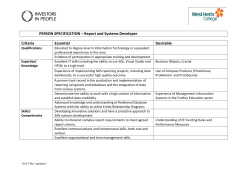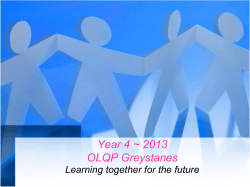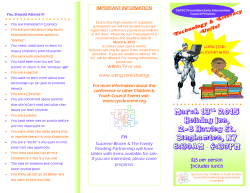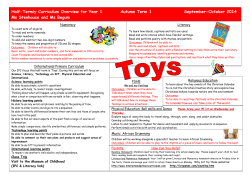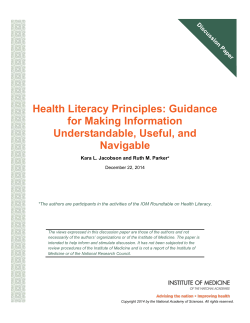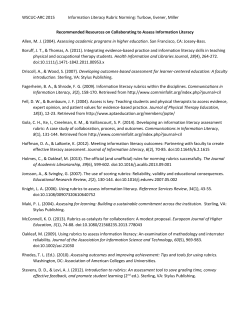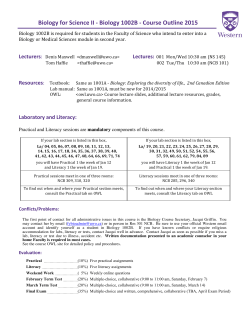
MIS INFORMATION SYSTEMS: AN OVERVIEW TJX Credit Card Breach
MIS CHAPTER 1 INFORMATION SYSTEMS: AN OVERVIEW TJX Credit Card Breach Fed Ex Cyrus NFL Coaches Hossein BIDGOLI Chapter 1 Information Systems: An Overview learning outcomes LO1 Discuss common applications of computers and information systems. LO2 Explain the differences between computer literacy and information literacy. LO3 Define transaction processing systems and management information systems. LO4 Describe the four major components of an information system. LO5 Discuss the differences between data and information. Chapter 1 Information Systems: An Overview l e a r n i n g o u t c o m e s (cont’d.) LO6 Explain the importance and applications of information systems in functional areas of a business. LO7 Discuss how information technologies are used to gain a competitive advantage. LO8 Explain the Five Forces Model and strategies for gaining a competitive advantage. LO9 Summarize the future outlook of information systems. Accounting Finance Marketing HR Operations • Use IS more than any other non IS field • Access to funds • Where to invest ----Can be heavily analytical • Sales force automation SFA • Geographic IS CRM • HRM , payroll, benefits • SCM • CAD/CAM • Intranets Media & Communications • Digital rights management systems 1-4 What is a system? 5 Combinations of hardware, software, and telecommunications networks that people build and use to collect, create and distribute useful data, typically in organizational settings. Control of System Performance Input of Data Resources Processing Data Output of Information Products Storage of Data Resources 6 Knowledge Worker 1960 2000 Knowledge Worker (Peter Drucker 1959) • Professionals that create, modify and/or synthesize information as a fundamental part of their job • They will require higher education levels and received higher compensation than workers in agriculture or manufacturing • At least 35% of all workers in Canada are knowledge workers As a knowledge worker of the future, computers and information technology will help you be more effective and productive, no matter what profession you choose. 1-7 Computers and information systems are all around you ◦ ◦ ◦ ◦ ◦ Online classes Grading Grocery and retail PDA and smartphones Internet “Information systems” versus “information technology” January 2007 Identity thieves stole more than 46.5 million credit cards ◦ Used sophisticated hacking techniques to break through security systems ◦ Stored the stolen information on servers in Eastern Europe and the United States Shows the international nature of cybercrime TJX Credit Card Breach • Computer literacy ◦ Having skills in using productivity software • Information literacy ◦ Understanding the role of information in generating and using business intelligence • Business intelligence (BI) ◦ Provides historical, current, and predictive views of business operations and environments ◦ Gives organizations a competitive advantage in the marketplace • Transaction processing systems (TPSs) ◦ ◦ ◦ ◦ Focus on data collection and processing, Cost reduction Operations repetitive Human involvement minimal Fed Ex • Management information system (MIS) ◦ Organized integration of hardware and software technologies, data, processes, and human elements ◦ Designed to produce timely, integrated, relevant, accurate, and useful information For decision-making purposes Include: ◦ Hardware components ◦ MIS software ◦ Processes Designing an MIS ◦ Define objectives ◦ Collect and analyze data ◦ Provide information in useful format Used in both the private and public sect Many organizations use information systems to gain a competitive advantage Data Database Process Information • Data ◦ Input to the system Sources of data ◦ External ◦ Internal 414712905 SIN 414-712-905 Time orientation Can be collected in different forms ◦ Aggregated ◦ Disaggregated ATM Database ◦ Heart of an information system ◦ Collection of all relevant data organized in a series of integrated files Essential for the success of any information system Managed with database management system (DBMS): e.g., Oracle Reduces personnel time needed to gather, process, and interpret data manually Process ◦ Generates the most useful type of information for decision making Generally includes transaction-processing reports and models for decision analysis Includes a wide range of models to support all levels of decision making Information ◦ Output of an information system ◦ Facts that have been analyzed by the process component Quality of information ◦ ◦ ◦ ◦ Timeliness Integration with other data and information Consistency and accuracy Relevance User interface ◦ Must be flexible and easy to use ◦ Graphical user interfaces (GUIs) Ultimate goal of an information system ◦ Generate business intelligence (BI) a university ◦ The university stores all student data in a database ◦ Built-in query capability ◦ Other types of analysis can be done 1. Increase employee productivity by reducing time, errors and costs using 2. Enhance decision making 3. Improve team collaboration 4. Create business partnerships and alliances 5. Enable global reach all over the world taking into consideration the culture of each nation or society. 6. Facilitate organizational transformation as the organization evolves and responds to the ever-changing marketplace. 21 Information technologies ◦ Achieve goals of information systems Examples ◦ ◦ ◦ ◦ Internet Databases POS Systems RFID tags POS system ◦ Fast customer service ◦ Improved inventory management Wireless network ◦ Efficient in-store communication Web site ◦ Communicate with customers ◦ Increase sales with online orders RFID tags ◦ Better manage inventory Information ◦ Second most important resource in any organization Four Ms of resources: ◦ ◦ ◦ ◦ Manpower >> Personnel info system Machinery >> Manufacturing Info System Materials >> Logistics info system Money >> Financial Info system 1831 Cyrus McCormick Competitive advantage Significant, long-term benefit to a company over its competition Ability to establish and maintain a competitive advantage is vital to a company’s success NFL Coaches NFL Coaches • • • What sources of competitive advantage can you identify the New England Patriots have by using information technology? Are these long term, sustainable competitive advantages? From our list of Roles and goals of Technology, what does the IS of the NFL do? 26 Michael Porter ◦ Professor at Harvard Business School ◦ Identified three strategies for competing in the marketplace successfully Overall cost leadership Differentiation Focus Five Forces Model ◦ Michael Porter ◦ For analyzing an organization, its position in the marketplace, and how information systems could be used to make it more competitive How IS can have a factor in the industry 30 Chief Technology Officer Manager of Info System Services Systems Analyst Network Administrator Database Administrator Computer Programmer Webmaster Hardware and software costs continue to decline ◦ Processing information less expensive in the future Artificial intelligence and related technologies will continue to improve and expand Computer literacy will improve Networking technology will improve Personal computers will continue to improve in power and quality Internet growth and acceptance will continue Computer criminals will become more sophisticated ◦ Protecting personal identity information will become more difficult Examples of uses for computers and information systems Difference between computer literacy and information literacy Management information system (MIS) ◦ Data, database, process, and information Porter ◦ Three competitive strategies ◦ Five Forces Model
© Copyright 2025

